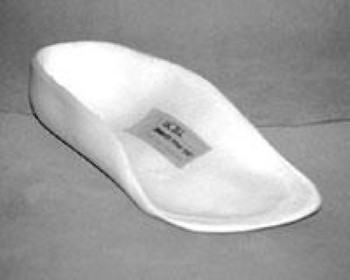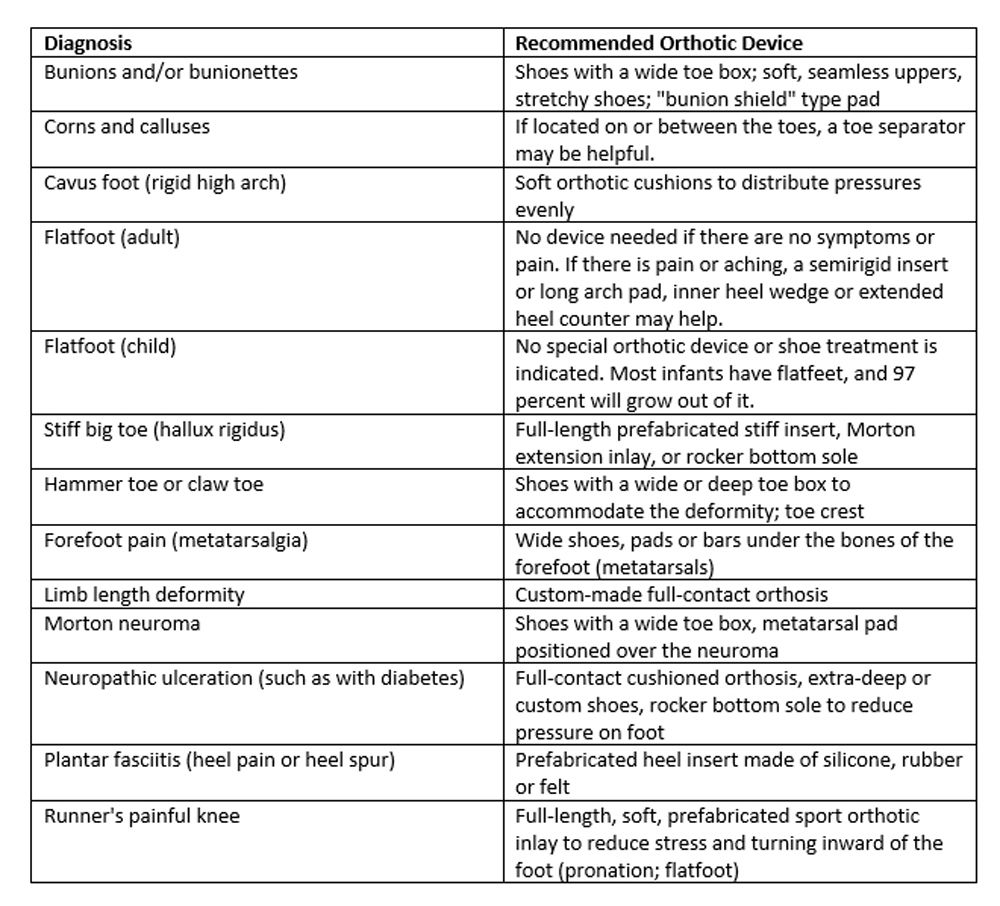Treatment
Orthotics
An orthotic device is:
- A foot pad or heel insert purchased at your local pharmacy or sporting goods store
- A custom-molded, individually designed shoe insert or ankle brace
Orthotic devices like these are frequently used to treat various conditions of the foot and ankle. They are often very effective in relieving common complaints.
Uses
Orthotic devices may be recommended for several reasons, including:
- Aligning and supporting the foot or ankle
- Correcting or accommodating foot deformities
- Improving the overall function of the foot or ankle
For example:
- A wedge inserted into the inner (medial) side of the sole of a shoe can be used to help support a flatfoot, thus reducing the risk of tendinitis.
- An ankle-foot brace can help relieve the pain of rheumatoid arthritis in the heel or ankle.
- A heel flare can be used to increase support and help prevent ankle sprains.
- Heel cushions can help absorb impact and relieve stress on the heel and ankle when you walk or run.
Although custom orthoses are far more expensive than off-the-shelf devices, they last much longer and provide more support or correction. In some cases, however, an over-the-counter device can be just as effective — especially when combined with a stretching and exercise program — and you can get one more quickly.
In the past, plaster molds of the foot were used to construct a custom-made orthosis. Now, computerized foot analysis is often used to develop orthoses with more precision.
Diagnosis Chart
The chart below shows which orthotic devices are commonly recommended for various foot conditions.
Consult your physician before buying or using an orthotic device on your own; if you select the wrong type of device, you could change the mechanics of your gait and cause problems instead of curing them.
Contributed and/or Updated by
Peer-Reviewed by
AAOS does not endorse any treatments, procedures, products, or physicians referenced herein. This information is provided as an educational service and is not intended to serve as medical advice. Anyone seeking specific orthopaedic advice or assistance should consult his or her orthopaedic surgeon, or locate one in your area through the AAOS Find an Orthopaedist program on this website.









